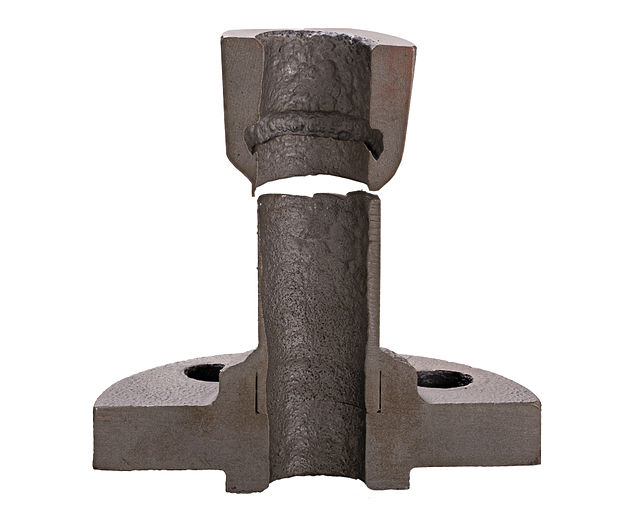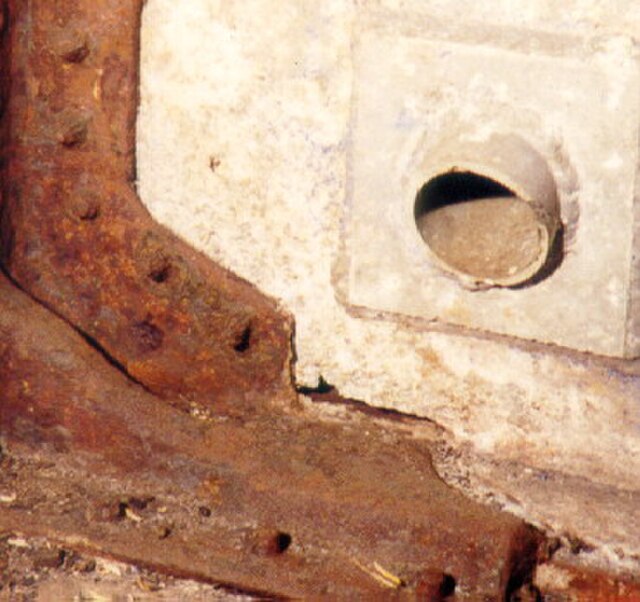High-temperature corrosion
High-temperature corrosion is a mechanism of corrosion that takes place when gas turbines, diesel engines, furnaces or other machinery come in contact with hot gas containing certain contaminants. Fuel sometimes contains vanadium compounds or sulfates, which can form low melting point compounds during combustion. These liquid melted salts are strongly corrosive to stainless steel and other alloys normally resistant with respect to corrosion at high temperatures. Other types of high-temperature corrosion include high-temperature oxidation, sulfidation, and carbonization. High temperature oxidation and other corrosion types are commonly modeled using the Deal-Grove model to account for diffusion and reaction dynamics.
High-temperature sulfur corrosion of a 12 CrMo 19 5 pipe stub
Corrosion is a natural process that converts a refined metal into a more chemically stable oxide. It is the gradual deterioration of materials by chemical or electrochemical reaction with their environment. Corrosion engineering is the field dedicated to controlling and preventing corrosion.
Corrosion on exposed metal, including a bolt and nut
Galvanic corrosion of an aluminium plate occurred when the plate was connected to a mild steel structural support.
Gold nuggets do not naturally corrode, even on a geological time scale.
Normal microstructure of Type 304 stainless steel surface





